ASM Metals HandBook Vol. 14 - Forming and Forging
Подождите немного. Документ загружается.

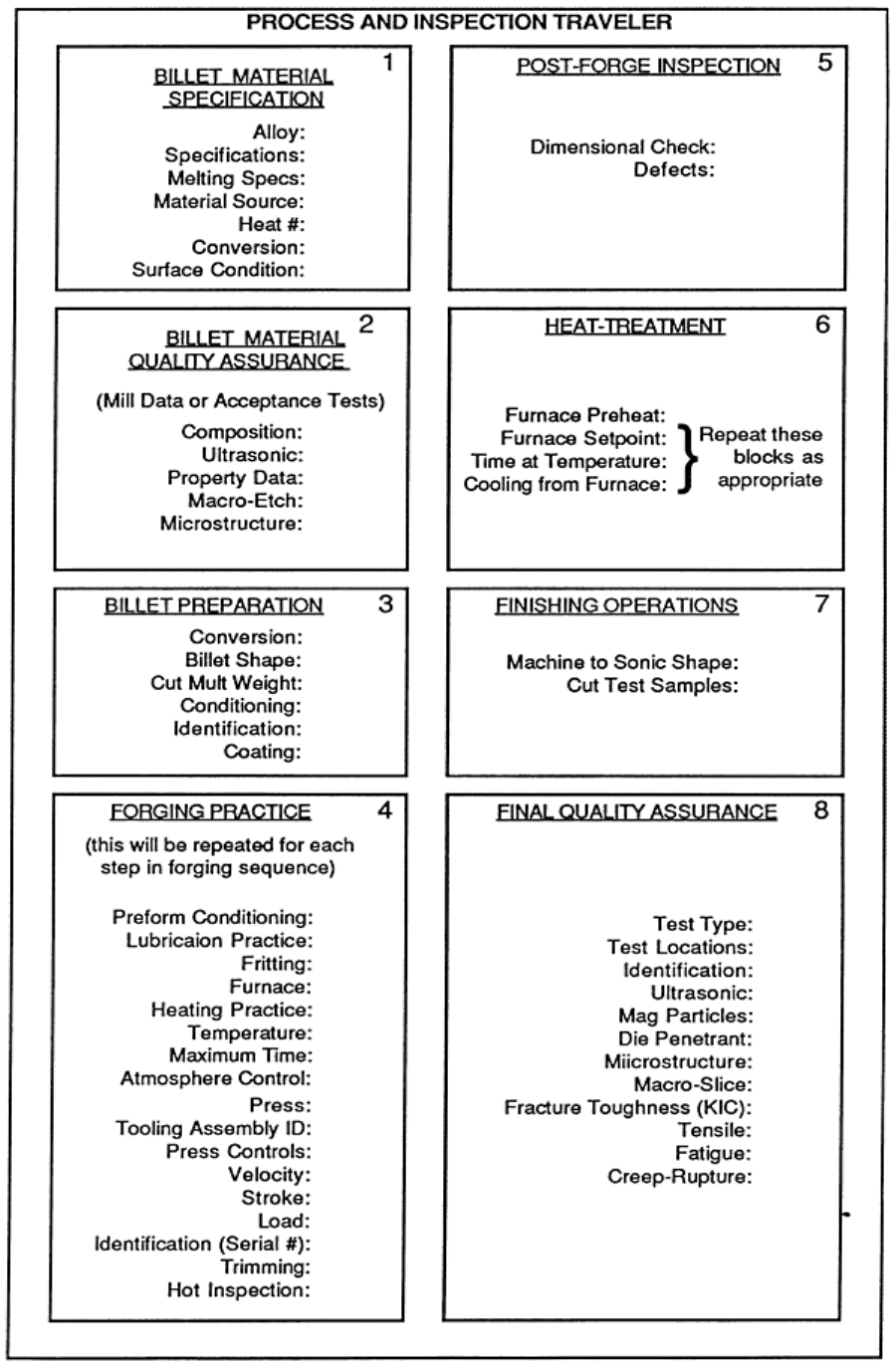
Fig. 4 Completed process specification (traveler).

The preceding task outline provides a framework of what an automated, knowledge-based system for forging process
design should accomplish. The actual implementation of such a system requires a much more detailed specification of the
methodology involved. A representation of a preliminary method description is shown in Fig. 5.
Fig. 5 Description of method for forging process planning and specifications.
Forging Process Design
H.L. Gegel and J.C. Malas, Air Force Wright Aeronautical Laboratories/Materials Laboratory; S.M. Doraivelu and V.A. Shende,
Universal Energy Systems, Knowledge Integration Center

References
1. S. Kobayashi, "Thermovisioplastic Analysis of Titanium Alloy Forging," AFWAL-TR-81-
4130, Air Force
Wright Aeronautical Laboratories, 1981
2. S.-I. Oh, "Finite Element Analysis of Metal Forming Processes with Arbitrarily-Shaped Dies,"
Int. J. Mech.
Sci., Vol 24, 1982, p 479
3. J.S. Gunasekera, H.L. Gegel, J.C. Malas, S.M. Doraivelu, and G. Griffin, Computer-
Aided Engineering
Approach to Metal Forming, American Society of Mechanical Engineering, 1982, p 1-6
4. R.J. Mayer, IGES: One Answer to the Problems of CAD Database Exchange, BYTE, 1987, p 209-214
5. J.P. Tang, S.-I. Oh, D.W. Birch, and K. Hoang-
Vu, "Manufacturing Science Program to Develop a
Computer-Aided Engineering (CAE) System for Die (Mold) Design and Manufacturing," AFWAL-TR-86-
405, Air Force Wright Aeronautical Laboratories, 1986
6.
K.R. Venuri, P.S. Ragupathi, and T. Altan, "Automatic Design of Blocker Forging Dies," Paper presented
at the 14th NAMRC Conference, Minneapolis, 1986
7.
H.L. Gegel, J.C. Malas, S.M. Doraivelu, J.M. Alexander, and J.S. Gunasekera, "Materials Modeling and
Intrinsic Workability for Simulation of Bulk Deformation," Advanced Technology of Plasticity,
Vol 1,
Springer-
Verlag, 1987, p 1243; and product publication of Universal Energy Systems Knowledge
Integration Center, 1987
8. A.B. Shapiro, "TOPAZ 2D--A Two-
Dimensional Finite Element Code of Heat Transfer Analysis,
Electrostatic and Magnetostatic Problems," Report UCID 20824, July 1986
9. J.O. Hallquist, "NIKE-
2D, a Vectorized Implicit Finite Deformation, Finite Element Code for Analyzing
the Static and Dynamic Response of 2-D Solids," Lawrence Livermore National Laboratory, 1983
10.
V. Ashok and J. Ramanathan, A Knowledge-Based Software Development Assistant, in
Proceedings of
Spring DECUS, U.S. Symposium, Digital Equipment Computer Users Society, May 1987, p 35
Modeling Techniques Used in Forging Process Design
H. L. Gegel and J.C. Malas, Air Force Wright Aeronautical Laboratories/Materials Laboratory; S.M. Doraivelu and V.A. Shende,
Universal Energy Systems, Knowledge Integration Center
Introduction
AN UNDERSTANDING of the flow behavior of the workpiece material under processing conditions is necessary in
order to exploit the full potential of process modeling techniques. Mechanistic and dynamic material modeling
approaches are being used to understand the fundamentals of flow, fracture, and workability. The former approach is
based on activation energy analysis and is limited to processes that can be described by steady-state equations applied to
pure, crystalline, and simple alloys. The latter approach is based on continuum and thermodynamic fundamentals and is
used to understand the intrinsic workability of simple as well as complex alloys. Dynamic material modeling is required
for obtaining realistic predictions of the total performance of any nonlinear deformation process and for reducing the cost
of the design process. The basic concepts and procedures involved in each of these approaches will be discussed in this
article.
Modeling Techniques Used in Forging Process Design
H. L. Gegel and J.C. Malas, Air Force Wright Aeronautical Laboratories/Materials Laboratory; S.M. Doraivelu and V.A. Shende,
Universal Energy Systems, Knowledge Integration Center
Constitutive Equations for Material Modeling
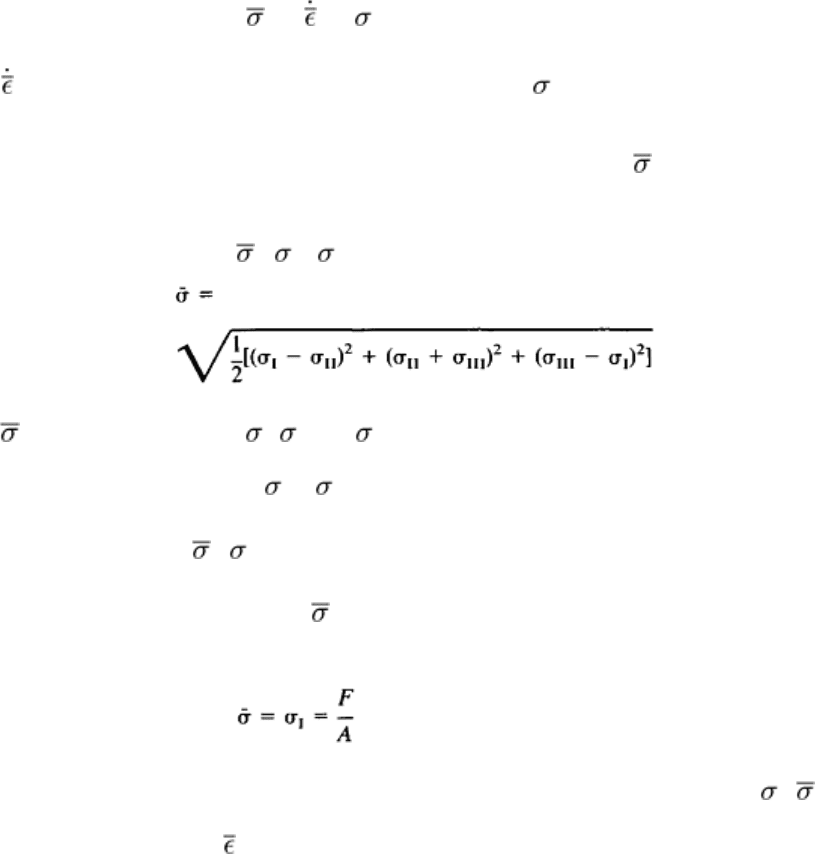
Constitutive equations describe the nonlinear relationship that exists among such process variables as effective stress,
effective strain rate, and temperature at different deformation levels. They are required for the development of dynamic
material models and for the realistic modeling of various unit processes. They are unique for each material under each
processing condition. Therefore, these equations are developed by using data, obtained under simplified experimental
conditions, that can be extended to complex situations by means of well-known hypotheses or, for the case of plastic
deformation, such criteria as the von Mises yield criterion. These equations affect the convergence and accuracy of finite-
element modeling and must satisfy certain requirements, including the following:
• The constitutive equations must be continuous
• The surface generated by the constitutive equations must have the same characteristics
as the surface
generated by the function that describes the dissipation of power applied to a specimen under testing
conditions
•
The equations are to be generated to cover the range of processing conditions experienced during the
production process
• The equations should be represented in a form compatible with a finite-element analysis program
Basic Concepts (Yield Criteria)
Fully Dense Materials. In general, the constitutive equations for material modeling are expressed as:
= f ( , T, *)
(Eq 1)
where is effective strain rate, T is instantaneous temperature, and * is a history-dependent variable defining the current
state of the material. Each of these variables is discussed in more detail in this section.
According to the Tresca and the von Mises yield criteria, the flow stress of homogeneous and isotropic materials
without porosity can be expressed by:
=
I
-
III
(Eq 2)
(Eq 3)
where is the effective stress and
I
,
II
, and
III
are the principal stresses.
In the case of a uniaxial stress state (
II
=
III
= 0), both criteria lead to the same result, namely:
=
I
(Eq 4)
Therefore, in uniaxial loading, the stress applied externally on the cross-sectional area of the specimen is equal to the
flow stress and is given by:
(Eq 5)
where F is the instantaneous force and A is the instantaneous cross-sectional area. Hereafter, = = flow stress.
The true strain for compression is defined as:
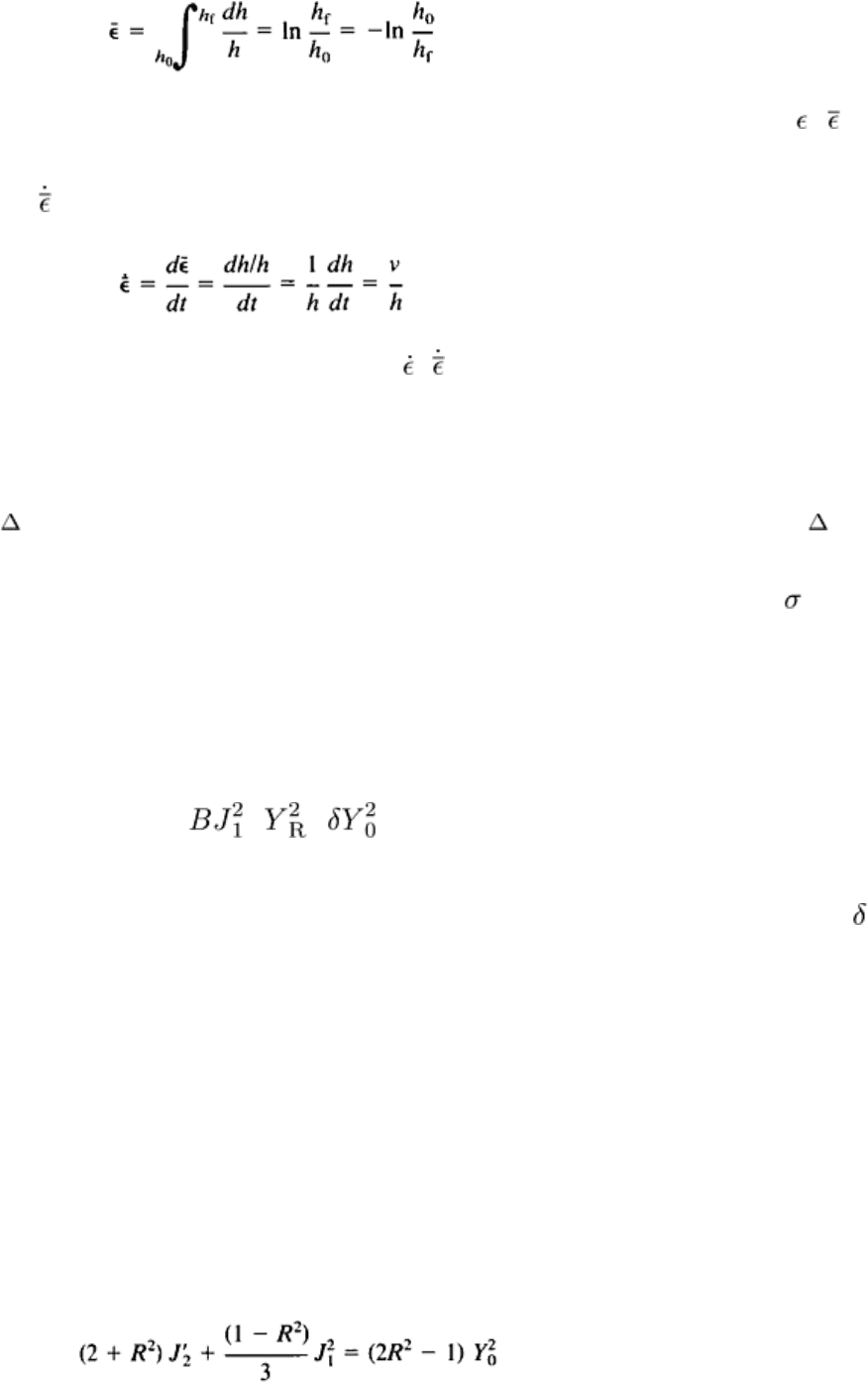
(Eq 6)
where h, h
0
, and h
f
are the instantaneous, initial, and final heights of the specimen, respectively. Hereafter, = = true
strain.
The effective strain rate is defined as:
(Eq 7)
where v is the instantaneous velocity of the cross head. Hereafter, = = effective strain rate.
If the strain rate does not remain constant during the test, the mean strain rate is considered for representing the flow
stress values. This mean strain rate is defined as the average strain rate experienced during the deformation.
The instantaneous temperature T of the specimen during deformation is referred to as the adiabatic temperature. It is
defined as T = T
0
+ T, where T
0
is the forming temperature or the initial test temperature of the specimen and T is the
increase in temperature during forming.
The current state of the material, such as plastic hardness, is defined by the history-dependent variable * (Ref 1).
Experimental results are used to arrive at the exact functions.
Porous Materials. The design of billet consolidation processes requires a special yield function for development of the
plasticity analysis. The plastic flow behavior of porous powder metallurgy (P/M) materials is more complicated than that
of ingot materials because the hydrostatic component of stress influences the onset of plastic flow. The effect of
hydrostatic stress is taken into account by considering a yield function of the form:
AJ'
2
+ = =
(Eq 8)
where J
2
is the second invariant of the deviatoric stress; J
1
is the first invariant (that is, the hydrostatic component of
stress); Y
0
and Y
R
are the yield stresses of fully dense and partially dense materials, respectively; and A, B, and are
functions of relative density.
Many researchers have determined these constants through heuristic arguments and the use of experimental results. For
example, R.J. Green presented an analytical method that considered a uniform cubic array of spherical voids in a solid
under states of stress corresponding to pure shear and hydrostatic compression (Ref 2). The results for these two stress
states allowed determination of the two variables A and B. He assumed that the stress distribution is uniform in two
directions through the minimum section of the array and that the effect of the voids on the stress in the third direction is
negligible on the planes riding between the voids. M. Oyane, S. Shima, and Y. Kono determined A and B using more
stringent assumptions (Ref 3). They found poor agreement between their theoretical and experimental results and
therefore reported experimentally determined values in a paper published later. Shima and Oyane abandoned this
analytical approach entirely; instead, they refined empirical relations obtained for their experimental values (Ref 4). H.A.
Kuhn and G.L. Downey also presented experimentally obtained values for these two variables (Ref 5). S.M. Doraivelu et
al. determined these variables while taking into account the distortion energy due to the total stress tensor (Ref 6). The
final equation obtained in Ref 6 is:
(Eq 9)
Flow Curves

The relationship between flow stress (or true stress or effective stress) and true strain is frequently called the flow curve
because it determines the stress required to cause the material to flow plastically at any given strain. Many attempts have
been made to fit mathematical equations to these curves at different temperatures and strain rates. Table 1 lists the various
equations as well as the materials, temperatures, and strain rate ranges for which they are valid.
Table 1 Summary of flow stress-true strain equations
Temperature studied Equation Materials studied
°C °F
Strain rate range
studied, s
-1
Aluminum, Al-Mg-Si alloy, copper, low-carbon steel,
nickel, zirconium, Inconel alloy, uranium
30-700 85-1290
10
1
-10
3
Al-4.2Cu alloy 100-600 212-
1110
0.25-16
Aluminum -50-400 -60-750
. . .
18-4-1 alloy steel 1000 1830
300-680
Low-carbon steels with varying amounts of chromium 30-1200 85-2190
0.25-12.5
Commercial purity aluminum; Al-Mn, Al-3Mg, and Al-
4.5Mg alloys
30-480 85-900
0.25-16
= K
n
(Eq 10)
Low-carbon (0.15% C) steel, zirconium 30-1100 85-2010
. . .
Aluminum -50-400 -60-750
. . .
= K
1
+ B
1
n
(Eq 11)
Copper, 99.99% Al 30 85
. . .
Aluminum -50-400 -60-750
. . .
= K
2
+ (B
2
+
)
n
(Eq
12)
Copper, brass, annealed stainless steel 30 85
. . .
= K
3
+ B
3
log
(Eq
13)
Steels 800-1100 1470-
2010
10
1
-10
3
= K
4
- (K
4
- B
4
)
exp (-C
4
)
(Eq
14)
Aluminum, copper, brass, bronze -50-400 -60-750
. . .
= K
5
+ B
5
[1 -
exp (-C
5
)]
n
(Eq
15)
Nickel and nickel alloys 0.6-0.9 T
m
(°K)
(a)
. . .
= K
6
[1 - exp(-
C
6
n'n
)]
1/n
(Eq
16)
Vacuum-melted and zone-refined iron 500-800 930-3.74 × 10
-4
to
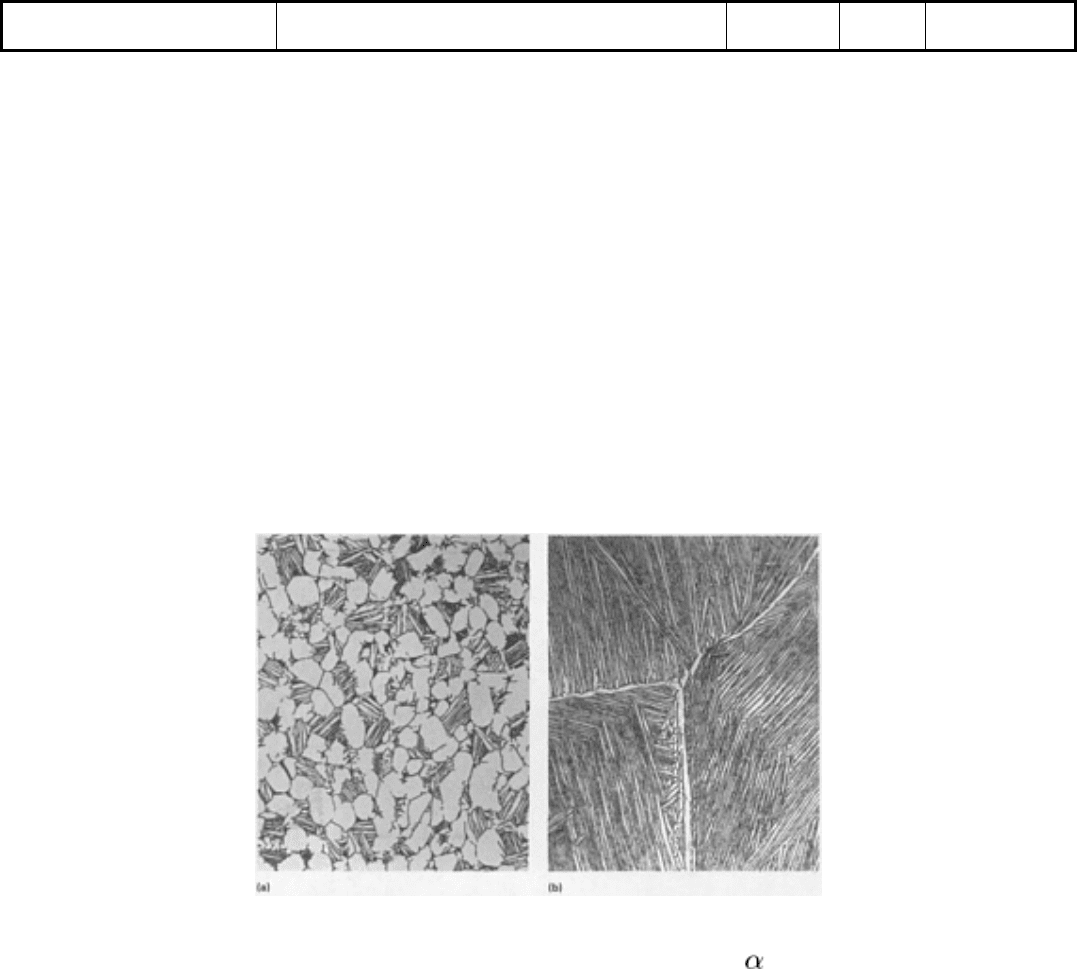
1470 4.54 × 10
-2
Source: Ref 3, 4, 5, 6, 7, 8, 9
(a)
T
m
, melting temperature of the alloy.
It is clear from the different equations proposed that none is entirely satisfactory for all materials and testing conditions.
One researcher has attempted to fit his data on aluminum to Eq 10, 11, 12, and 13 (Table 1) and has concluded that Eq 10
provides the best fit (Ref 7). Other researchers have found that the flow curves for copper deviate from Eq 10 and consist
of two parabolic curves, as given in Eq 11 (Ref 8). At higher strains, the exponential form of Eq 14, 15, and 16 seems to
be appropriate because these lead to a steady-state stress at higher strains.
In most cases, the behavior of these alloy systems during forced dissipative flow has characteristics that are strongly
dependent on initial conditions, such as the α+ β and β(Widmanstätten) microstructures shown in Fig. 1. Both of these
microstructures are used as forging preform conditions, and each microstructure requires different thermomechanical
processing during billet conditioning.
Fig. 1 Two types of initial microstructures in Ti-6Al-2Sn-4Zr-2Mo alloy. (a) + β
preform microstructure. (b)
β(Widmanstätten) preform. Both 500×
Isothermal constant strain rate testing of these materials at elevated temperatures reveals that, with time, the flow curves
evolve into what is sometimes called a steady state. This evolution with time toward steady-state behavior is shown in
Fig. 2 for a Ti-6Al-2Sn-4Zr-2Mo alloy having both types of initial microstructure. When the two flow curves approach
each other asymptotically at approximately 0.60 effective strain, the transients associated with structural change have died
away, and the Widmanstätten initial condition has evolved toward an equiaxed structure. Diffusional processes, if given
sufficient time, will cause the structure to become equiaxed.
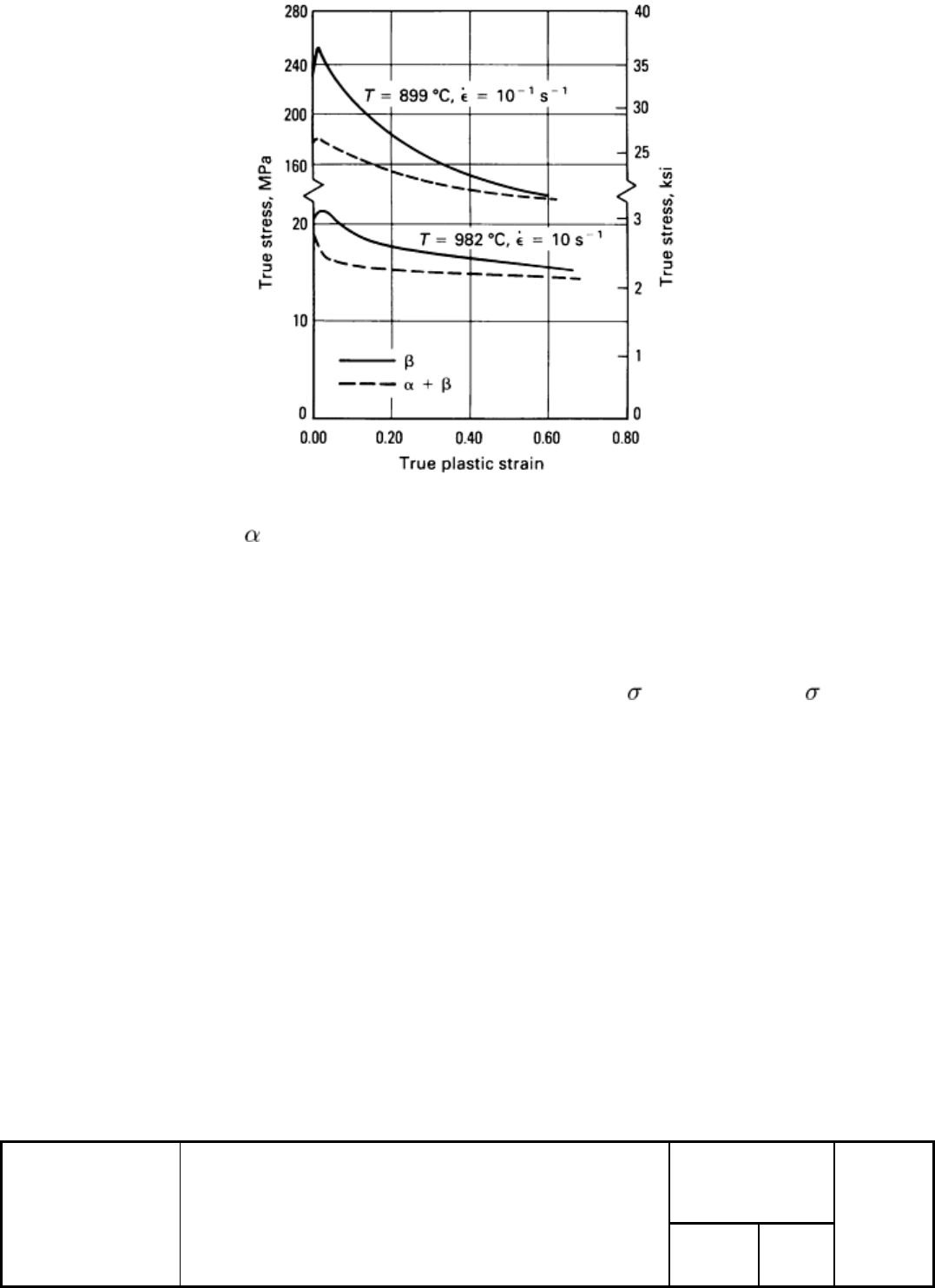
Fig. 2 Evolution with time of + β and β Ti-6Al-2Sn-4Zr-2Mo alloy preforms to the same steady-state behavior
Deterministic modeling cannot be used to predict accurately the long-term behavior of complex engineering alloys,
because it is necessary to choose a priori which atomic mechanisms may be operating and to decide how they can be used
to control microstructural evolution and mechanical stability during forced dissipative flow. The problem that must be
confronted in developing material behavior models for use in computer-aided engineering is of a statistical nature in a
very complex setting. The mechanism, for example, by which the effort variable (t) reaches the value (t
2
), where t
2
>
t, is generally irrelevant to its behavior after time t
2
because the forced dissipative flow process is irreversible. The
behavior of the workpiece material at t
2
is dependent on the evolution of certain intrinsic control parameters that govern
how power is dissipated by random, fluctuating, generalized forces. These forces, for example, may be such system
variables as chemical potential, temperature, and stress field gradients.
In practice, experimentation by measuring the flow stress of the workpiece material (the output) as a function of the
kinematic variables (the input) of the system, in combination with mathematical modeling based on physical laws, is used
to derive constitutive equations and information about workability. This methodology is called the black-box approach,
and it can be used to derive a material model for the intrinsic workability of any material.
Flow Stress-Strain Rate Relationships
The most common relationships used to correlate flow stress-strain rate data at various temperatures and strain levels are
summarized in Table 2, along with the materials and temperature and strain rate ranges for which they are valid. It can be
seen that, for most materials, the power law or logarithmic expression seems to fit well. In the case of steel, Eq 18 (Table
2) seems to fit well. Equations 17 and 18 (Table 2) are analogous to the relationships obtained from creep data at low and
high stresses, respectively (Ref 10).
Table 2 Summary of flow stress-true strain rate equations
Temperature range
studied
Equation Materials studied
°C °F
Strain rate
range
studied, s
-1

Aluminum, Al-Mg-Si alloy, Mg-Al-Be alloy, copper, nickel,
zirconium, low-carbon steel, Monel alloy, Inconel alloy, uranium
30-700 85-1290
10
1
-10
3
Titanium, zirconium, nickel, molybdenum, tungsten 20-1200 70-2190
0.2-60
Super-pure aluminum 195-550 385-
1020
0.86-7.1
Al-4.2Cu alloy 30-600 85-1110
. . .
Al-5.7Zn alloy 0.95 T
m
(°K)
(a)
. . .
. . .
Pure aluminum, copper, low-carbon (0.17% C) steel -199-1200
-325-
2190
. . .
Pure aluminum 500 930
10
2
-10
3
Aluminum, copper 250-900 480-
1650
110-600
18-4-1 alloy steel 1100 2010
300-680
En 58, En 2A 30-600 85-1110
3-250
12 different steels 900-1200 1650-
2190
1.5, 8, 40,
100
Zn-Al alloy 30-300 85-570
. . .
= K
m
(Eq 17)
Sn-Pb alloy . . .
10
-2
-10
2
Pure aluminum, copper, low-carbon (0.17% C) steel -199-1200
-325-
2190
1-40
Super-pure aluminum, aluminum alloys 1060-O, 1100-O, 6061-O,
2024-O,7075-O, 6061-T6, 7075-T6
30 85
10
-3
-10
3
Aluminum -50-400 -60-750
. . .
Lead, aluminum, copper 30 85
10
-4
-10
3
= K
1
+
Dlog
(Eq
18)
Tool steels 1000 1830
90-906
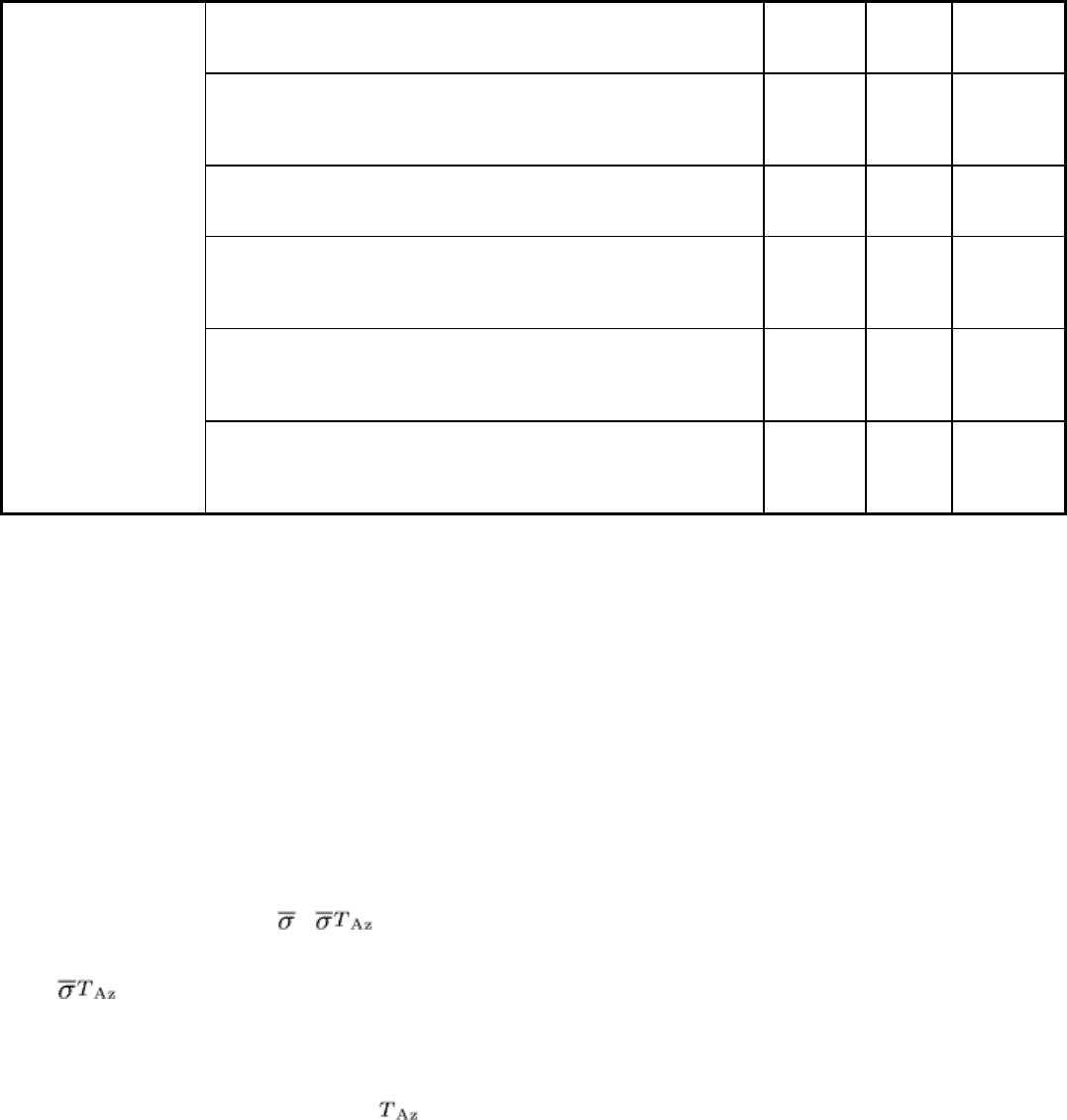
Pure lead 30 85
105-258
High-strength steel 524-1055 975-
1930
. . .
Low-carbon steel 20-1055 70-1930
. . .
Constructional steel 765-1055 1410-
1930
. . .
High-strength steel . . . . . .
6.5 × 10
-2
-
430
Pure aluminum 300-550 570-
1020
1-45
Source: Ref 3, 4, 5, 6, 7, 8, 9
(a)
T
m
, melting point of alloy.
In Eq 17 and 18, K is a temperature-dependent strength parameter, and m is the strain rate sensitivity factor. The m value
is one of the most important control parameters, and the physical meaning behind it and its effect on intrinsic workability
must be understood. For complex alloys, at a given deformation, m varies as a function of strain rate and temperature.
Flow Stress-Temperature Relations
Equation 19 has been used to represent the flow stress as a function of temperature (Ref 11, 12, 13):
= e
-sT
(Eq 19)
where and s are constants and T
Az
is absolute zero temperature (-273.13 °C, or -459.5 °F).
A similar relationship has been defined between Brinell hardness (HB) and temperature, as follows (Ref 14):
HB = HB e
-sT
(Eq 20)
Many researchers have found that Eq 20 is valid for many metals and alloys in temperature ranges in which structural
transformation, precipitation, dynamic strain aging, and so on, are not present (Ref 14). Whenever softening takes place
by dynamic recovery and recrystallization, the value of s changes (Ref 15).
In the temperature range in which structural transformation takes place, the flow stress increases; this is represented as a
small hump in the flow stress-temperature diagrams. This effect has also been found by many researchers for a number of
metals and alloys (Ref 15, 16, 17, 18). The increase in flow stress has been observed at approximately 850 °C (1560 °F)
for alloy steels (Ref 15, 16).
In high strain rate testing at a definite temperature range, thermal instability occurs, and deformation takes place in the
form of bands (due to adiabatic heating). This is known as adiabatic shearing, and it can lead to fracture if it is severe (Ref
19). In this region, an increase in flow stress also occurs because of the hindrance of dislocation motion by the shear
bands. This type of adiabatic shearing occurs in testing under very high strain rate conditions (Ref 19). In the case of alloy
